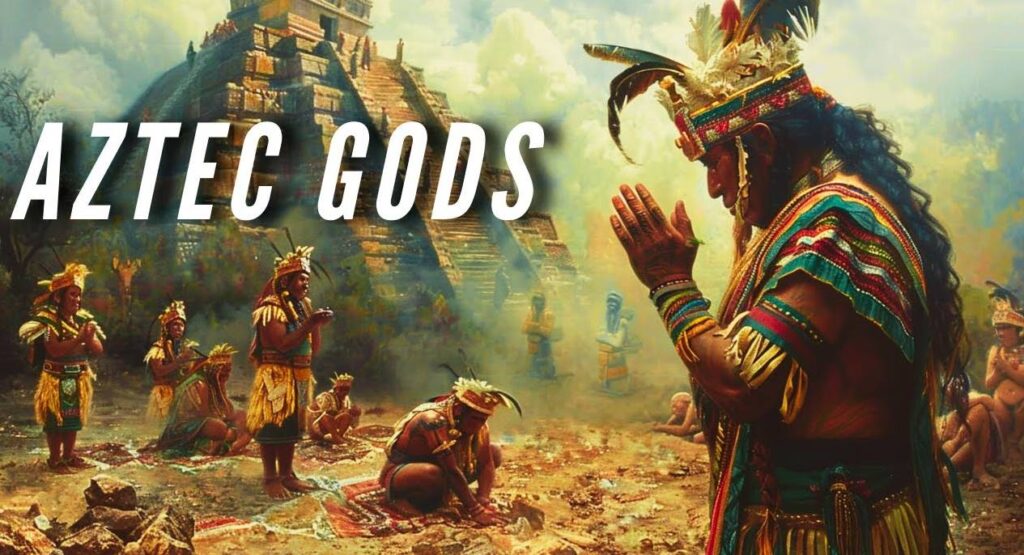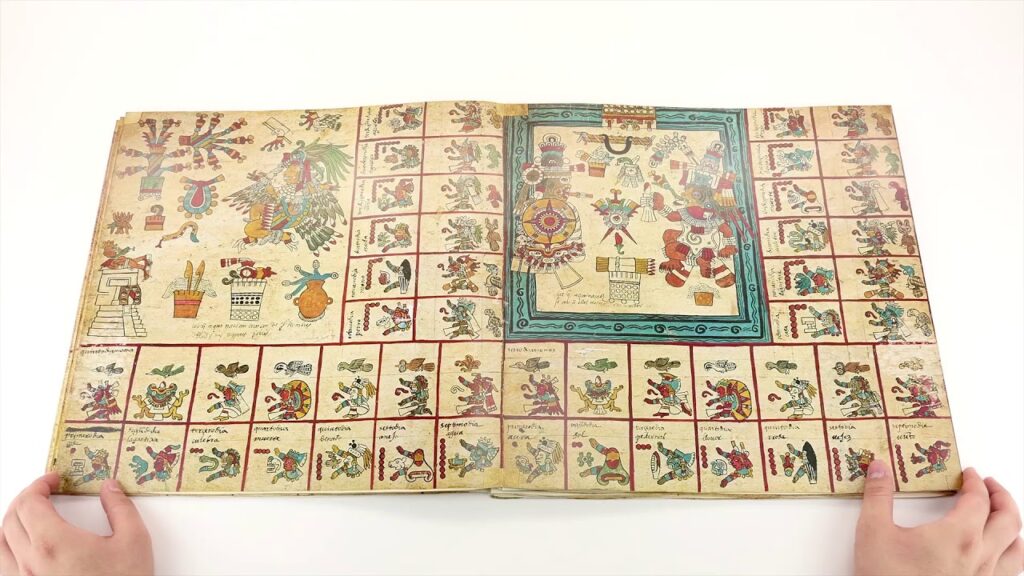How Many Gods Did the Aztecs Have? Recognising Their Vast Pantheon
To fully understand the history of Mexica, you must know the Aztec gods. One important question that often arises is, How many gods did the Aztecs have? relax, you’ll soon find out, Continue reading.
A Society Shaped by Religion and Culture
Before the arrival of the Spanish conquistadors, the Aztecs built an advanced society that remains a major influence on the art and traditions of Mexico. Their empire, which controlled the center of the country until the 16th century, put religion at the heart of daily life.
The Three Divine Realms
The Aztecs divided the gods and goddesses into three categories. One group of gods ruled the sky and the universe, another looked after fertility and agriculture, and a third controlled war and sacrifices. Although the Aztec pantheon had more than 190 gods and goddesses, a few deities were the most influential.
Among all these deities, four were the most influential:
- Huitzilopochtli: Warrior god of the Mexica and their revered patron deity.
- Quetzalcoatl: Deity of knowledge, wind and civilization.
- Tezcatlipoca: Almighty of the night, magic and destiny.
- Xipe Totec: God of fertility and renewal.
People saw these four gods as sons of Ometecuhtli, the supreme creator. Although the Aztec pantheon included many divinities, each influenced key aspects of life.
How Many Gods Did the Aztecs Have? In its three realms
I-Kingdom of heaven and the universe
Tonatiuh
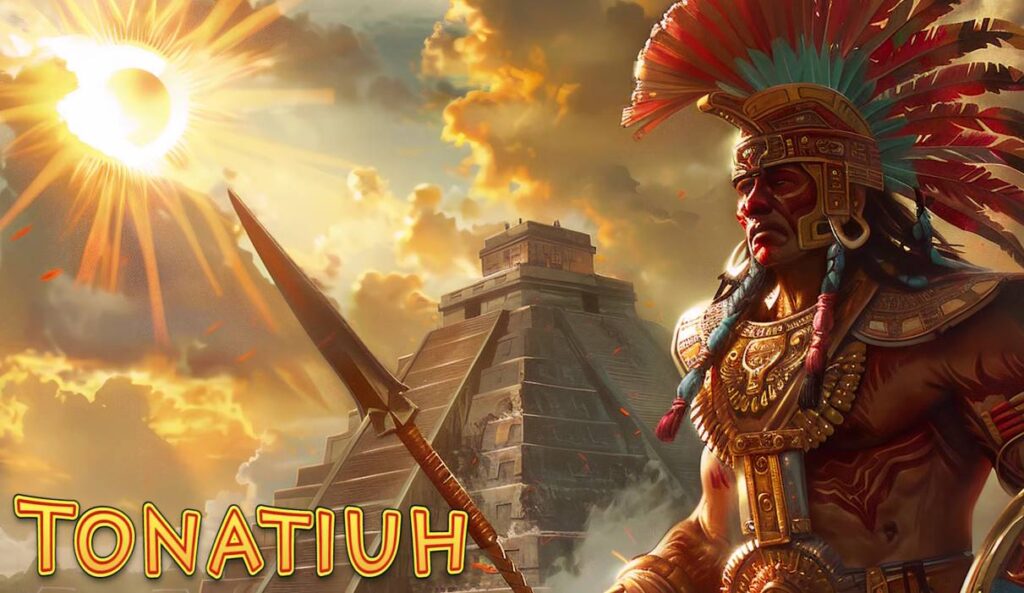
(Toh-nah-tee-uh), the Sun god, is one of the most important deities. His face is the center of the Aztec Sun in the art of temples and other monuments. Also known as “The turquoise god”, he is responsible for heat, fertility and life.
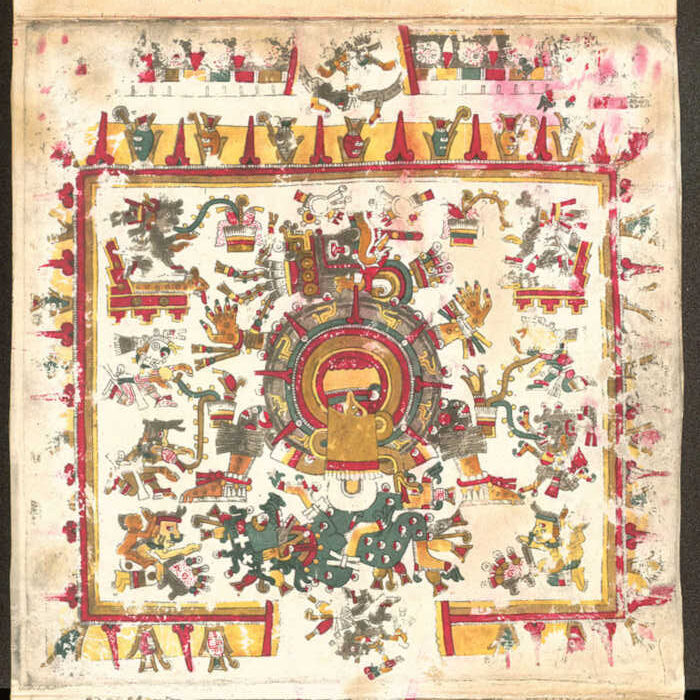
The main natural element worshipped by the Aztecs was the Sun. They came to refer to themselves as the “People of the Sun”. People believed that sacrifices and worship gave the sun the energy needed to provide the good things in life, such as food, warmth, and health.
This deity ruled during the era of the Fifth Sun, which began after Chalchiuhtlicue destroyed the Fourth Sun of the Aztec era. He is the patron of warriors, who gathered the conquered peoples for sacrifice and guided the spirits of fallen enemies to the afterlife.
Tlahuizcalpantecuhtli
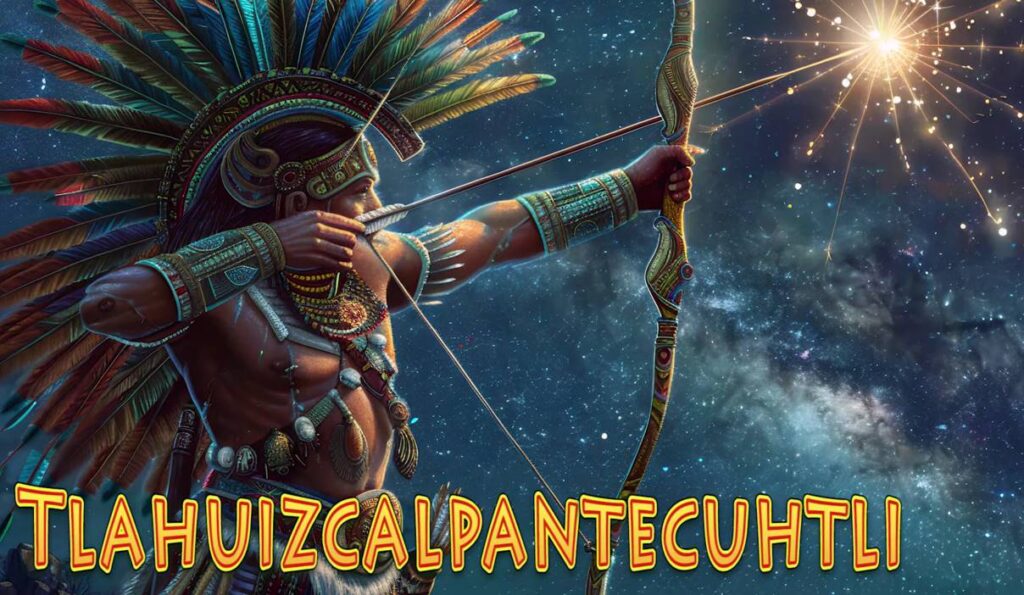
The god of the morning star, he symbolizes the dawn and the beginning of a new day. He uses arrows to chase away the darkness and open the way for the sun. His role reflects both the hope of dawn and the risks of arrogance.
According to the myths, he tried to defy the sun, but failed and suffered the consequences. His story is a reminder of the natural order and cycles of the universe.
Xólotl
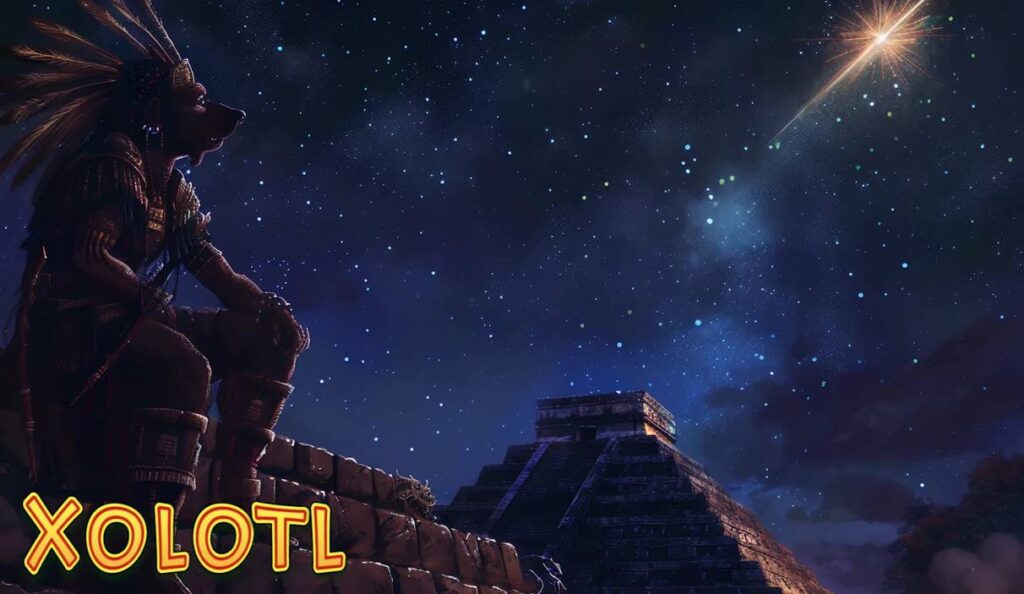
God of lightning, death and monsters. He often appears as a dog-headed man. He is linked to the evening star Venus and regarded as both the twin and companion of Quetzalcoatl.
Its main function is to guide the souls of the dead to the underworld. Through destruction, he symbolizes change, transformation and renewal. The duality of Xolotl, as protector of the sun and guide to the underworld, reflects the Aztec belief in the balance between light and darkness, as well as between life and death.
Quetzalcoatl

(Keh-tzal-coh-atl), the Feathered Serpent and Ruler of the West, is probably the most famous Aztec god, related to the creator gods of other cultures. He was the patron of creativity, knowledge and education.
Their most famous association is with the Mayan serpent god, Kukulcan. They were similar in appearance and ruled many of the same aspects of their respective civilizations.
Kukulcan was part of the Mayan trilogy of Earth-creating gods and taught the Maya agriculture, medicine and social organization.
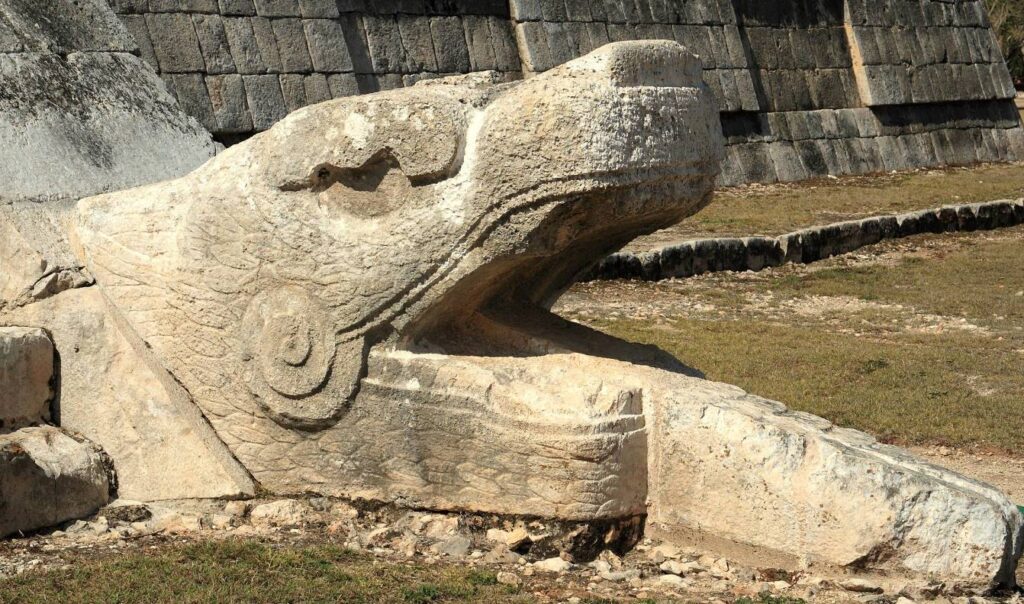
Tezcatlipoca
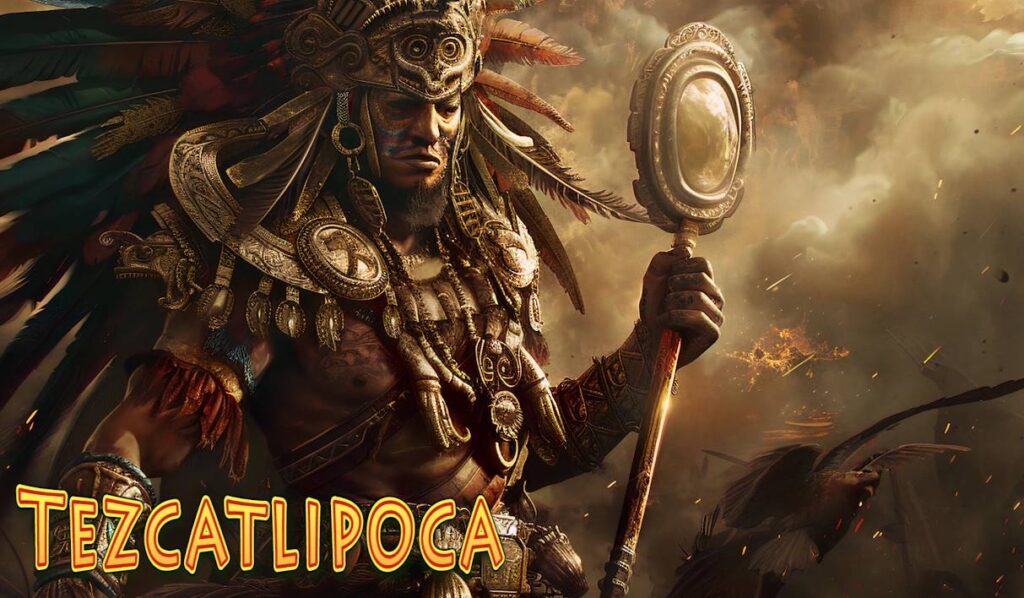
His name means “Smoking Mirror”, Aztec god of night, magic, beauty and cosmic power. He represented the dark side in contrast to his brother Quetzalcoatl, who embodied light.
According to mythology, Tezcatlipoca created the sun and the earth, but his brother, moved by jealousy, transformed him into a jaguar. In Aztec art, artists identify him by the black stripes on his face and the obsidian mirror he carries.
Tezcatlipoca rivaled Huitzilopochtli, the god of war, though both created the world. The Aztecs also linked him to death, cold, and night mysteries, reinforcing his powerful, enigmatic image.
Mixcóatl

The god of the hunt, stars, and Milky Way wields a bow and arrows and wears prey skins. He represents hunters and embodies survival skills like stealth, strength, and navigating nature.
His link to the stars connects him to the cosmos, reflecting a belief in the relationship between celestial events and human affairs.
II-Kingdom of fertility and agriculture
People believed this group of gods and goddesses controlled rains, rivers, and natural forces vital for food and life. Their role ensured survival and well-being.
Chalchiuhtlicue
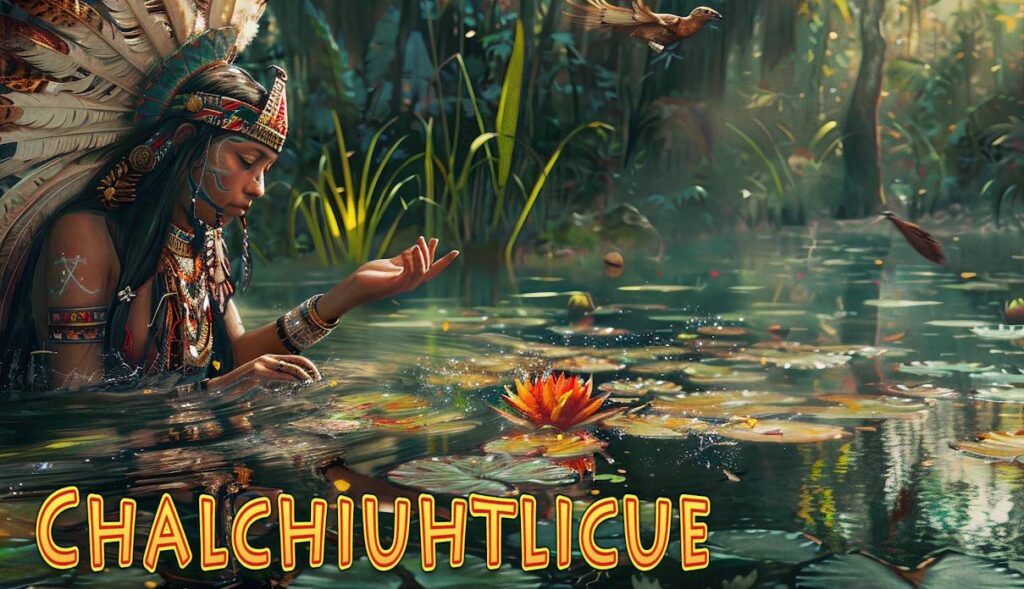
Her name, “the one with the jade skirt,” refers to the Aztec goddess of water, rivers, and lakes. She protected sailors, women in childbirth, and newborns.
On one occasion, his tears caused a great flood on earth.
She was the twin sister, and in some versions, the wife of Tlaloc, the god of storms and thunder. She wore a headdress adorned with tassels and a skirt releasing a stream of water.
His figure symbolizes the importance of water in life and spirituality, highlighting its essential role in Aztec culture.
Tlaloc
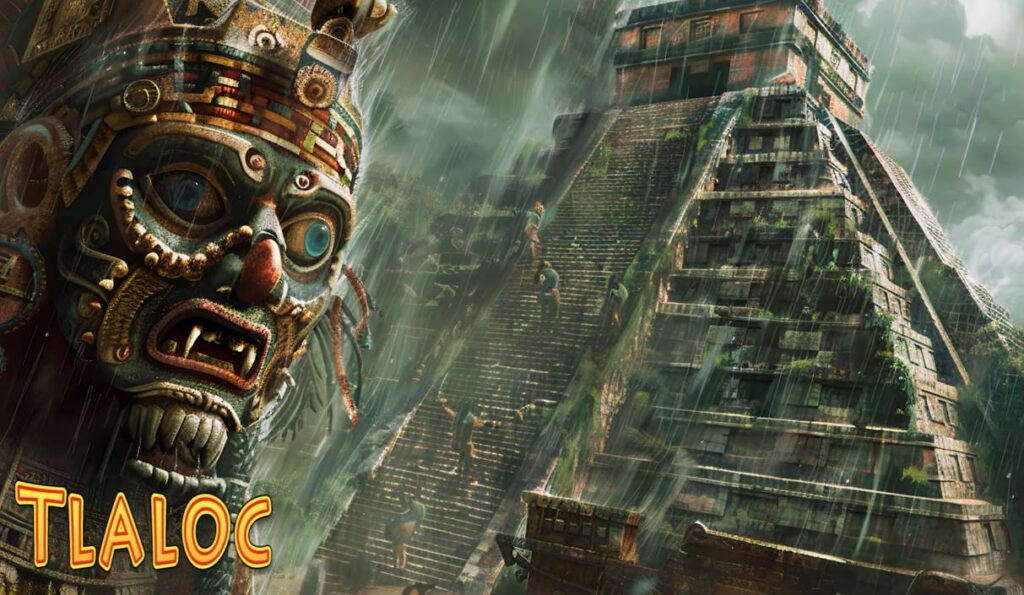
Pronounced “Tláh-lock,” he served as the Aztec deity of rain, agriculture, and fertility. He governed meteorological phenomena like storms, lightning, snow, hail, and floods. Linked to caves, mountains, and springs, he resided on a sacred mountain in Teotihuacan.
Although Tlaloc could bring rain for the harvest, he also unleashed destructive storms when enraged. According to mythology, his sister Chalchiuhtlicue caused the flood that destroyed the World of the Fourth Sun, saving humanity by transforming its spirits into fish.
The cult of Tlaloc is one of the oldest in Mexico, with roots in the Olmec and Maya civilizations. He appears with large eyes, fangs, and an imposing look. His sanctuary atop the Templo Mayor ranked second only to Huitzilopochtli’s.
Centeotl
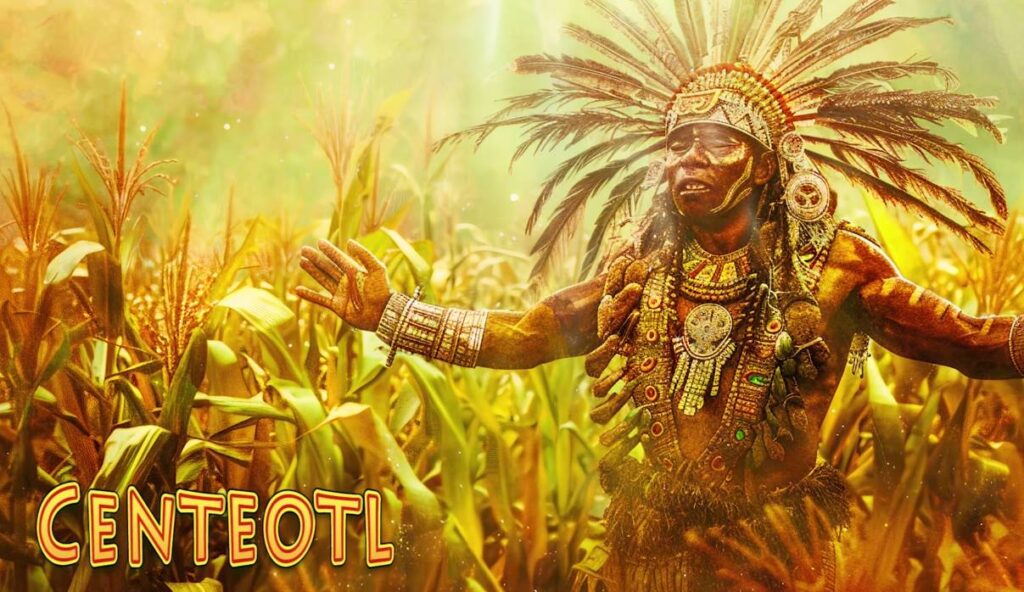
The god of corn, he connects to Mayan religions and wears a corn-cob headdress. He relates to Tlaloc, with Chicomecoatl as his female counterpart.
Mayahuel
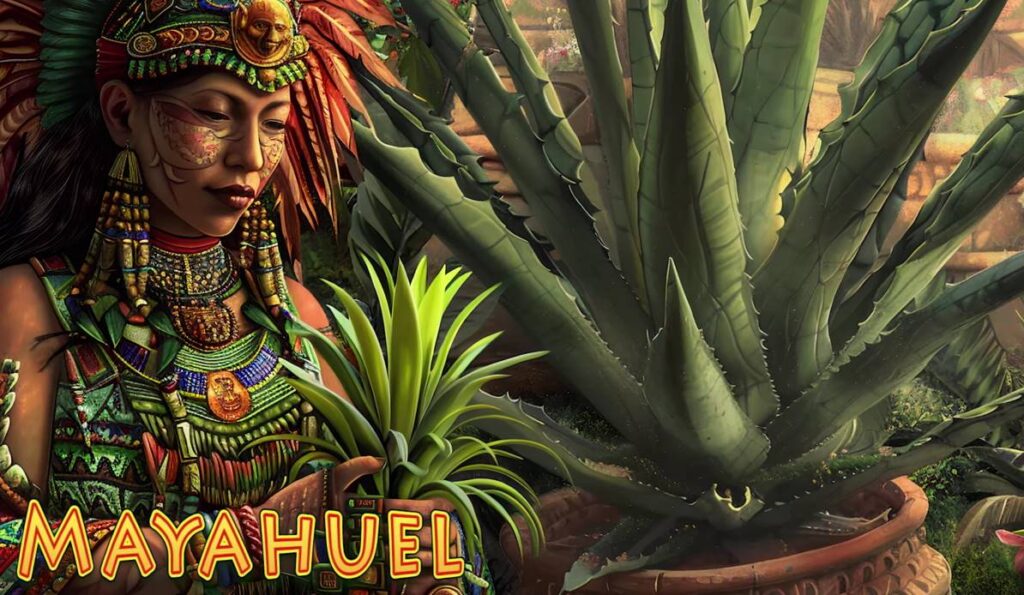
The goddess of agriculture and patroness of the maguey plant, she is believed to have honeyed sap as blood. She appears with 400 breasts to nourish all her Aztec children.
Chicomecoatl
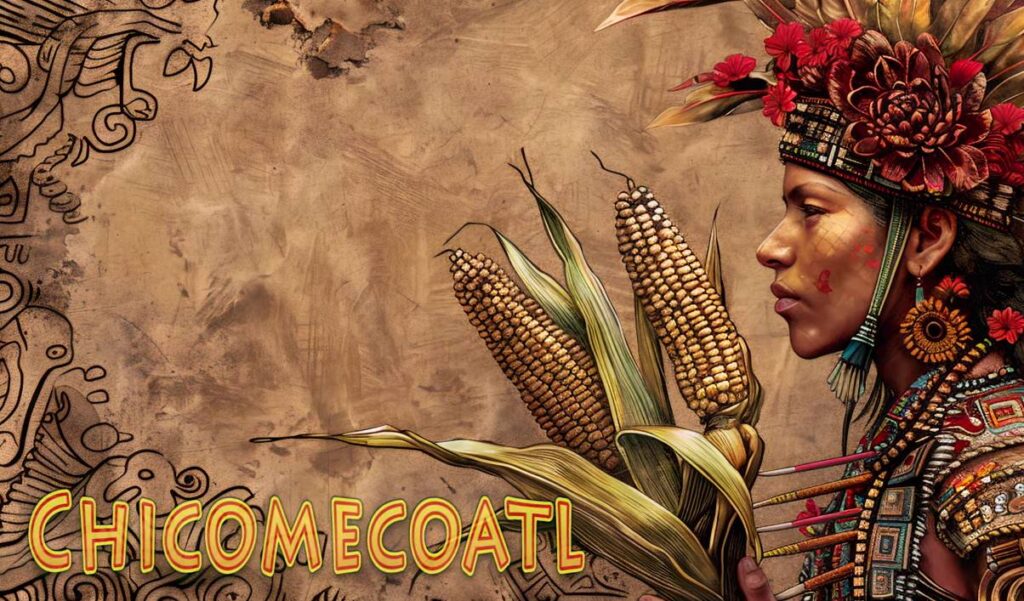
Her name translates to “Seven Serpents”; she was the Aztec deity associated with corn, agriculture, and sustenance. Considered the most important for farmers, she symbolized successful harvests and abundance of food.
She appeared as a young woman carrying flowers or a sun shield, symbolizing her connection to life, fertility, and the harvest of corn, the Aztec staple food.
Xochiquétzal
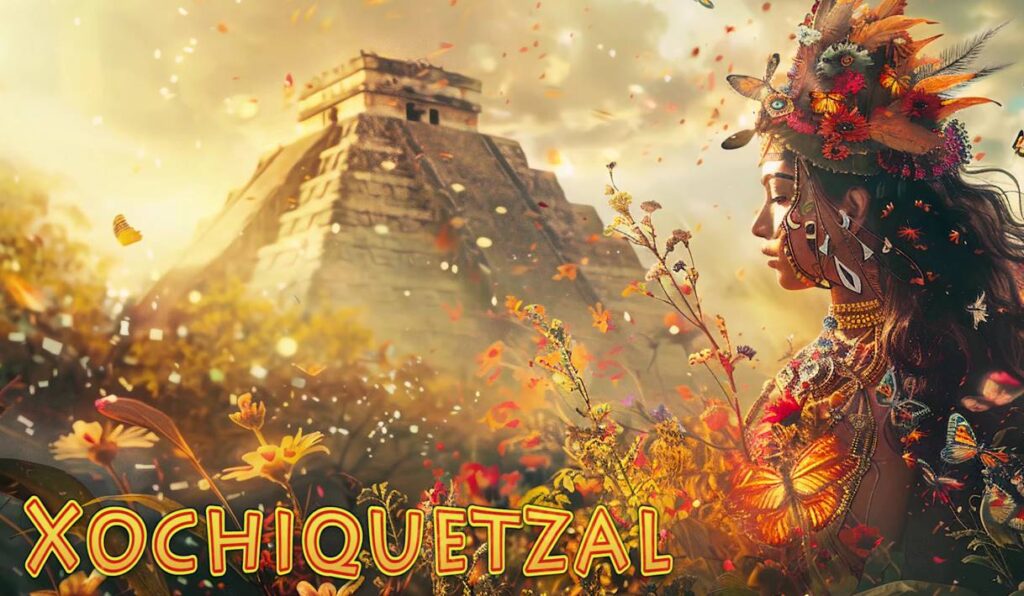
Goddess of beauty, love, fertility, flowers, and the arts, she appears as a charming young woman, surrounded by butterflies and flowers, symbols of her dominion over life’s delicate and beautiful aspects.
She encourages art and poetry creation, and her role in fertility rites highlights the connection between love, life, and growth. In myths, other gods often pursue Xochiquétzal, reflecting her desirability and the universal pursuit of beauty and creative inspiration.
Xochipilli
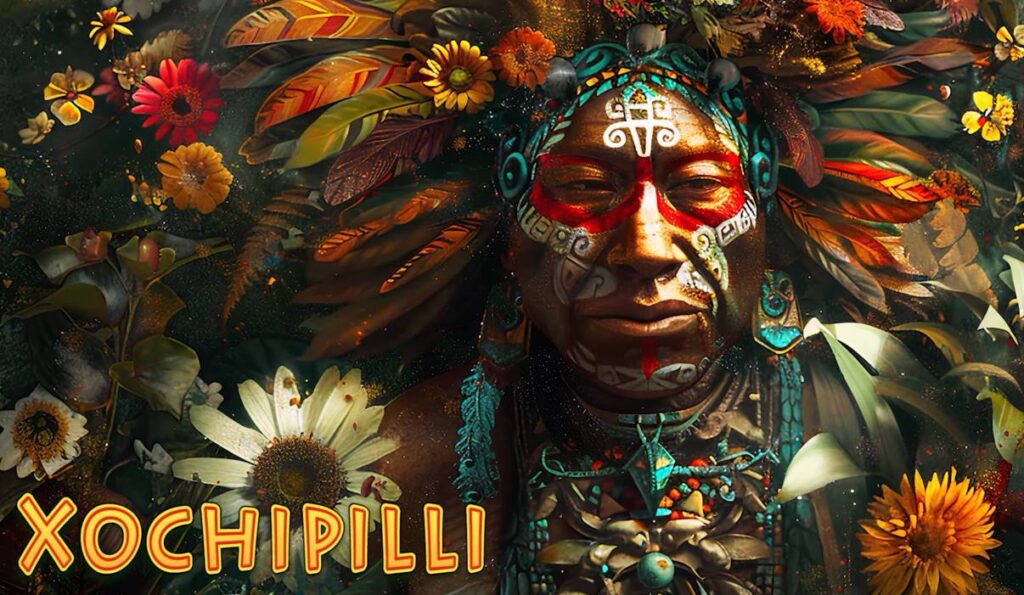
The prince of flowers, he is the god of art, games, beauty, dance, flowers, and song. He appears with a joyful expression, surrounded by flowers, symbolizing life’s pleasures and the beauty of the natural world.
His role celebrates the creative and expressive aspects of human culture, underscoring the importance of joy, creativity, and the arts in connecting humanity with the divine. Worship of Xochipilli highlights the belief that beauty and pleasure are sacred gifts to cherish and share.
Chantico

Goddess of the home, fires, and volcanoes, she wears a crown of red chilies, symbolizing the fire she rules.
She protects the home and its inhabitants, ensuring the hearth flame never extinguishes, vital for daily life and survival. Her legends tell of her fierce defense of her domain. Her figure reflects both the warmth of family and community and the potential destructiveness of fire, showing her dual nature.
Patécatl
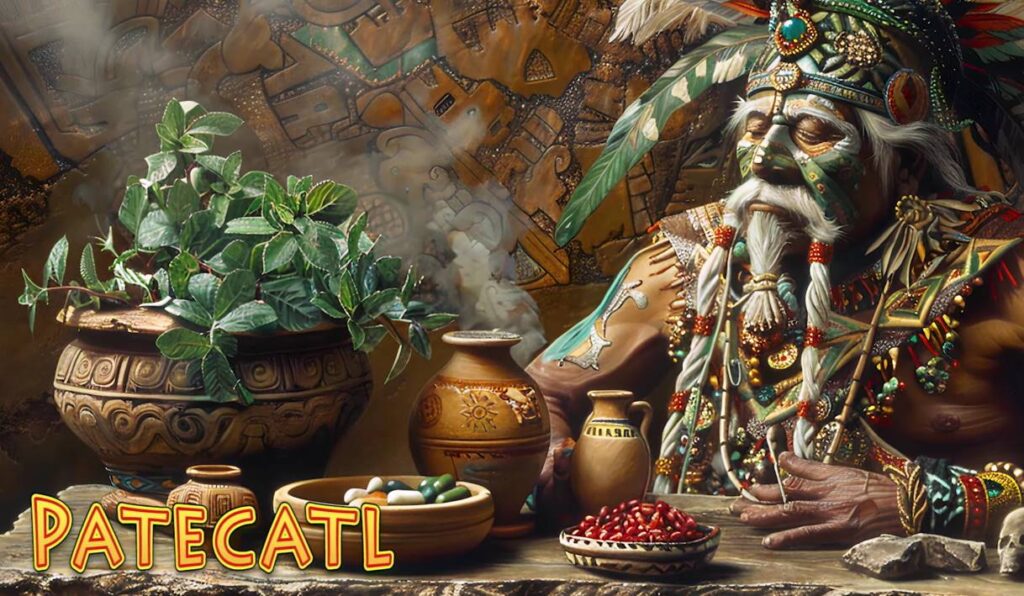
God of healing and fertility. Represented with medicinal plants, he is the patron of physicians and healers, symbolizing the healing properties of nature and the importance of health and wellness. His knowledge encompasses the medicinal use of plants and herbs, underlining the value of traditional medicine in Aztec society.
III-Kingdom of War and Sacrifice
Huitzilopochtli
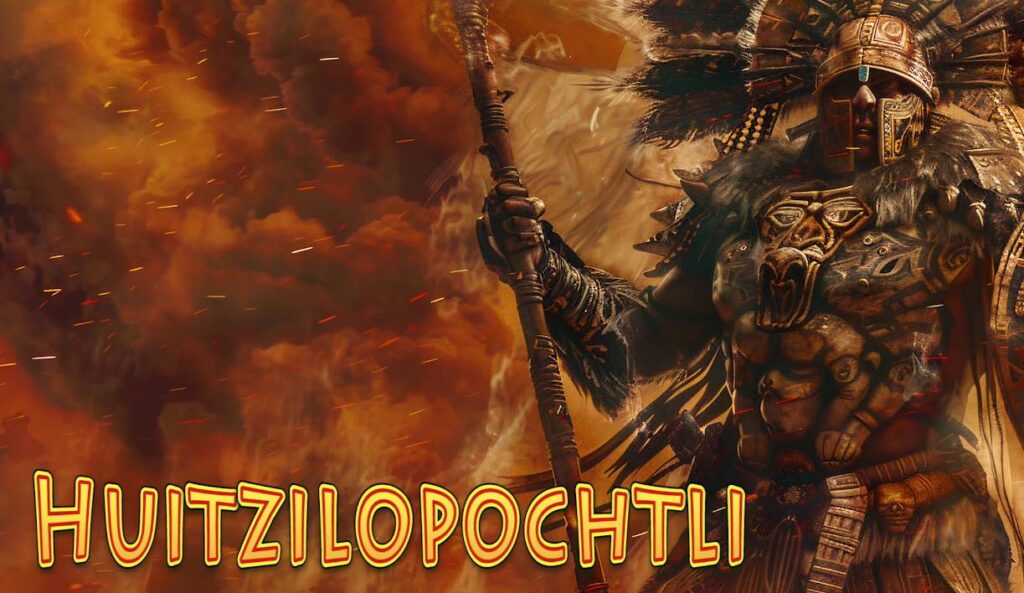
Every culture traces its origin to someone. The Aztecs had Huitzilopochtli, father of the Aztec people, whose name means “Hummingbird of the Left (South).” He is always depicted wearing feathers and carrying a serpent scepter.
It was Huitzilopochtli who led the Aztec people to build their capital, Tenochtitlan. He is the patron saint of war and sacrifice, whose red shrine is located at the top of the Templo Mayor, surrounded by skulls.
There are many myths and legends surrounding the rivalry between Huitzilopochtli and his sister, Coyolxauhqui, who was the goddess of the moon. One story tells that Huitzilopochtli dismembered her and threw her pieces down the mountain, after she insisted that the town remain in Coatepec. This allowed the Aztecs to follow him to his new home in Tenochtitlan. The story appears carved on a stone at the base of the Templo Mayor.
Xipe Totec
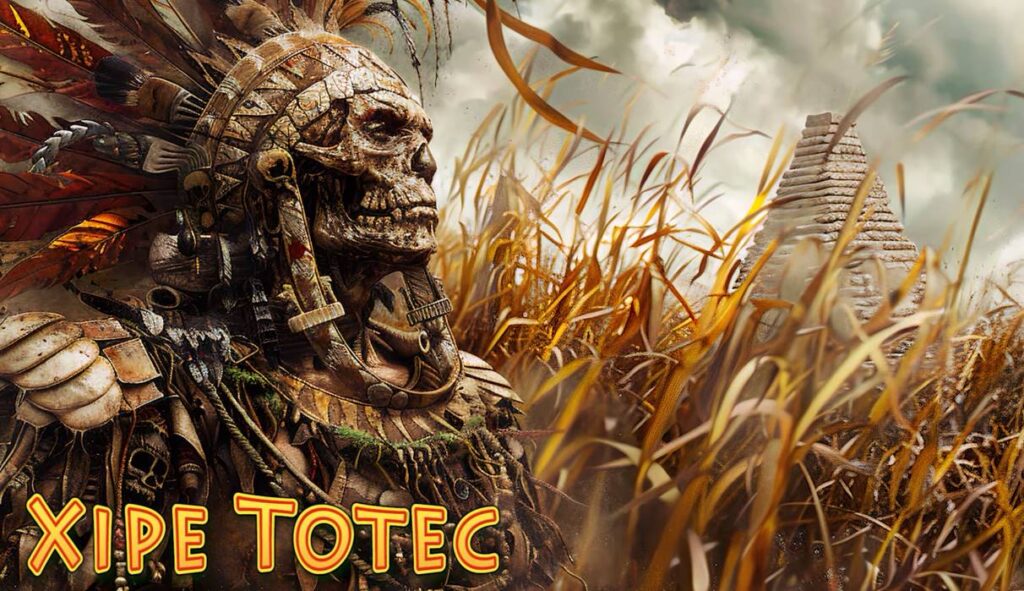
This god rules the East and oversees fertility, sacrifice, and rebirth. His name translates to “Lord of the Torn Skin,” and he is often depicted covered in human skin. Grotesque as it may seem, he represents how plants die to make way for new ones that sustain life and the Earth.
Tlaltechutli
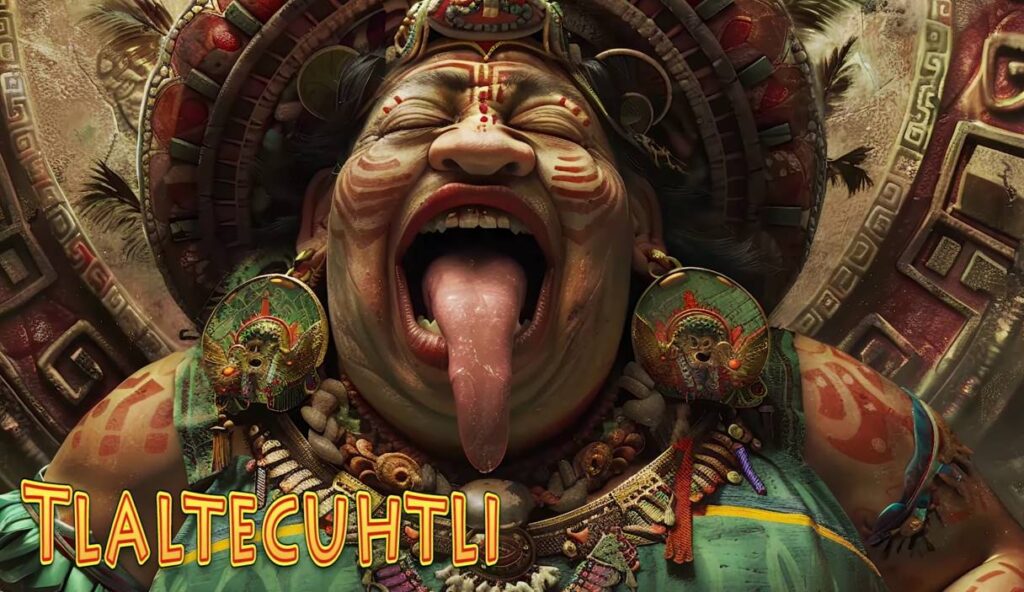
Much feared in Aztec mythology, Tlaltechutli (Tlal-teh-koo-tlee), the Earth Goddess. She needed many sacrifices, mostly human, to maintain her appetite. As the sun disappears at the edge of the earth when night falls, people believed Tlaltechutli would devour the sun to bring darkness to the world. To restore it, sacrifices to the sun god Tonatiuh were necessary.
Mictlantecuhtli y Mictecacihuatl
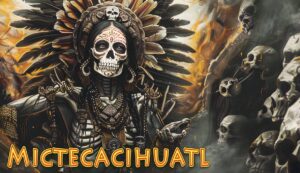
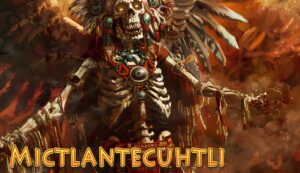
While many gods ruled parts of life, two ruled the afterlife: Mictlantecuhtli (Mik-tlan-tek-ooht-lee) and his wife, Mictecacihuatl (Mik-te-cah-see-wah-tl), were the Lord and Goddess of Death. Together they ruled the Mictlán, the lowest part of the underworld, where the souls of the dead spend eternity.
The most famous myth about Mictecacihuatl is that she was sacrificed as a baby and became Mictlantecuhtli’s wife. She guards the bones of the dead, and her cult became part of the traditional Day of the Dead festivities.
Tepeyóllotl

“The heart of the mountain,” depicted as a jaguar leaping out of the earth, symbolizes earthquakes and echoes. An embodiment of the raw power of nature and the deep, hidden forces of the earth, its role reminds the Aztecs of the power of nature and the need for respect and reverence for it.
Interesting article : Aztec Culture

